New Advances of Microwaves on Biomedical Applications
By J.-C. Chiao and Mohammad-Reza Tofighi
The recent IEEE International Microwave Symposium IMS 2013, held on June 2-7 in Seattle, WA, USA, presented up-to-date advanced radio frequency (RF) and microwave technologies for biomedical applications by world experts. In this article, we review the highlights of the sessions and workshops that were devoted to biological and medical applications.
Presentations in four podium sessions, one poster session, and two workshops highlighted the fast growing research of utilizing electromagnetic fields in biological exploration and medical applications. The presentations attracted many scientists and engineers, some have not been working in the medicine-related applications, and inspired many lively interactive discussions in the sessions and workshops.
The podium sessions focused on four diverse areas of applications:
(1) Recent developments in medical imaging, including magnetic resonance imaging (MRI) and microwave imaging methods. Papers reported recent developments in RF coils for ultra-high-field MRI systems such as automatic frequency tuning and impedance matching technique for the optimal coil efficiency at 7T and creating homogeneous magnetic field distributions. Techniques to improve range resolution for forward-scattered signals in a microwave imaging system were reported.
(2) Advanced concepts in biomedical radars and radar based techniques to address noninvasive vital signs monitoring. This session presented recent development in noise and body motion artifact cancellation approaches for vital sign sensing with radars, and an ultra-wideband micro-Doppler radar for human gait analysis that can track more than one person and detect vital sign of moving objects. One presentation discussed the use of a handheld communication device such as a cellular phone with antenna mismatching effects for vital sign detection.
(3) Microwave spectroscopy and sensing techniques for studying biological cells. Presentations focused on utilizing broadband signals to probe directly aqueous solution or a finite number of cells in integrated microfluidic devices. Results were discussed for determination of sugar concentration in solutions using ultra-wideband impedance spectroscopy and a 1 – 50 GHz dielectric spectroscopy biosensor with an integrated 65-nm CMOS receiver front-end. Four papers focused on human normal and cancerous cell studies including detection of live and dead human cells in a broadband microchamber; micro-dosimetric studies for single cells with nanosecond pulsed electric fields; a tunable frequency resonant sensor for cell cytoplasm analysis based on dielectric permittivity variations; a dielectric spectroscopic sensor to probe a single alive cell in an integrated microfluidic platform from 40MHz to 40GHz; and electroporation and dielectrophoresis of single cells in a microfluidic system employed with a microwave interferometric sensor.
(4) Medical implantable devices and handheld systems utilizing RF and microwave for telemetry and powering. A wireless sensor with dual on-chip antennas operated at 5.2 GHz and RF powered at 0.5 mW for implantable intraocular pressure monitoring; a study to determine specific absorption rates of textile antennas for on-body medical telemetry applications at 2.4 GHz and 5.2 GHz; a multiband 2-Port vector network analyzer at 6.6 GHz, 19.7 GHz, and 32.4 GHz with an embedded coplanar permittivity sensor for measurements in aqueous solutions; and a single-chip dual-mode continuous-wave and pulsed electron paramagnetic resonance spectrometer based on 0.13 µm SiGe BiCMOS were reported.
Two workshops brought focused discussion from international experts on electro-nanoporation effects on biological systems, and microwave sensors/biochips for biomolecules and cells characterization.
The Monday workshop organized by Professors Guglielmo d’Inzeo at La Sapienza University of Rome and James Hwang at Lehigh University presented four related topics in the emerging and intriguing field of research utilizing short (from nanoseconds to microseconds) and intense (amplitudes in the megavolt-per-meter range) pulsed electric fields (ms/ns PEFs) on human cells to explore new scientific studies and practical applications in medicine. Promising results were reported for gene transfer techniques to enhance delivery to cell nucleus and induce cancer treatment with complete melanoma remission, and for neuromuscular, neurophysiological, and cardiac stimulation. The workshop covered state-of-the-art research on nsPEFs, including generator design and assembly, electrode layout, micro-chamber development, modeling and simulation, and recent medical applications.
The Friday workshop organized by Drs. Katia Grenier at LAAS-CNRS and Arnaud Pothier at XLIM-CNRS addressed the latest advances on the microwave-, millimeter-, submillimeter-wave, and THz probing instrumentations suitable for in-situ investigation of biomolecules, single cell, cells suspensions, and tissues in microfluidic systems. Accurate/noninvasive biological samples characterizations and analysis as well as the instrumentation designs and features were highlighted by ten international researchers. Presentations highlighted resonant and broadband approaches for respective targeted applications such as precise cell identification, diagnostic and prognostic applications for cancers, point-of-care diagnosis tools, and handheld devices for biomolecule characterization. Examples showed the potentials of high frequency dielectric spectroscopy for cell analysis by extracting intracellular dielectric properties up to single cell. Such measurements can be utilized to sort out alive or dead cells, cell types, cancer cell aggressiveness, and cell immaturity. Precise measurements of subtle changes of the relaxation of water, which is induced by dissolved/dispersed proteins or cells, were conducted at the microwave to terahertz frequency ranges with broadband and high-Q resonator methods. The results underlined the potentials for free-solution and label free biosensor applications. Cancer tissue that has a higher water content than healthy tissue produced a significantly different microwave signature. Near-field millimeter-wave measurements utilizing a high-resolution micromachined probe was applied for skin cancer diagnosis based on the electromagnetic signatures. Instrumentation, tissue and skin modeling, characterization data, and calibration procedures were presented.
Applications of electromagnetic waves demonstrated in device and system implementation for telemetry and powering of medical implants, studies and identification of biological cells and molecules in aqueous solutions, new modalities of medical imaging techniques, and remote monitoring and sensing of vital signs brought great attention and interests to microwave and RF engineers and researchers in industries and academia. In IMS2013, the inspiring presentations and sparkling discussions indicated numerous challenges to overcome and enormous opportunity in the near future for healthcare applications.
For Further Reading
The session and workshop information can be found at http://www.mtt-archives.org/~mtt10/Events.htm.
The workshop agendas are listed at http://www.ims2013.org/technical-program/workshops.
The sessions information can be found at http://program.ims2013.org/users/sched or in the IMS 2013 program book: http://www.ims2013.org/technical-program/program-book.
Contributors
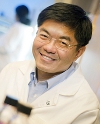 J.-C. Chiao is Greene endowed professor and Garrett endowed professor of Electrical Engineering at University of Texas – Arlington; and an Adjunct Associate Professor in the Internal Medicine Department at UT-Southwestern, Medical Center. Read more
J.-C. Chiao is Greene endowed professor and Garrett endowed professor of Electrical Engineering at University of Texas – Arlington; and an Adjunct Associate Professor in the Internal Medicine Department at UT-Southwestern, Medical Center. Read more
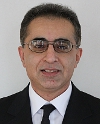 Mohammad-Reza Tofighi is an associate professor of electrical engineering with the Capital College, Pennsylvania State University, Middletown, PA. He conducts research on wireless implants, biomedical antennas, medical applications of microwave radiometry, and complex permittivity measurement of tissues using time and frequency domain methods. Read more
Mohammad-Reza Tofighi is an associate professor of electrical engineering with the Capital College, Pennsylvania State University, Middletown, PA. He conducts research on wireless implants, biomedical antennas, medical applications of microwave radiometry, and complex permittivity measurement of tissues using time and frequency domain methods. Read more







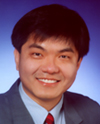 J.-C. Chiao is Greene endowed professor and Garrett endowed professor of Electrical Engineering at University of Texas - Arlington; and an Adjunct Associate Professor in the Internal Medicine Department at UT-Southwestern, Medical Center.
J.-C. Chiao is Greene endowed professor and Garrett endowed professor of Electrical Engineering at University of Texas - Arlington; and an Adjunct Associate Professor in the Internal Medicine Department at UT-Southwestern, Medical Center.  Mohammad-Reza Tofighi is an associate professor of electrical engineering with the Capital College, Pennsylvania State University, Middletown, PA. He conducts research on wireless implants, biomedical antennas, medical applications of microwave radiometry, and complex permittivity measurement of tissues using time and frequency domain methods.
Mohammad-Reza Tofighi is an associate professor of electrical engineering with the Capital College, Pennsylvania State University, Middletown, PA. He conducts research on wireless implants, biomedical antennas, medical applications of microwave radiometry, and complex permittivity measurement of tissues using time and frequency domain methods. 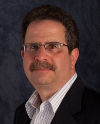 Bill Saltzstein is the President of connectBlue Inc., a leading provider of industrial and medical wireless solutions. Bill is also the Medical Business Development Director and joined connectBlue in February of 2011 with a vision to extend medical care out of the traditional environments through the use of wireless technologies.
Bill Saltzstein is the President of connectBlue Inc., a leading provider of industrial and medical wireless solutions. Bill is also the Medical Business Development Director and joined connectBlue in February of 2011 with a vision to extend medical care out of the traditional environments through the use of wireless technologies. 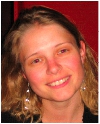 Katia Grenier (S'99 -M'03) received her Ph.D. degree in electrical engineering from the University of Toulouse, France. She is now with the LAAS-CNRS lab, in France, where her research interests are focused on the development of fluidic-based microsystems for biological and medical applications as well as for reconfigurable wireless.
Katia Grenier (S'99 -M'03) received her Ph.D. degree in electrical engineering from the University of Toulouse, France. She is now with the LAAS-CNRS lab, in France, where her research interests are focused on the development of fluidic-based microsystems for biological and medical applications as well as for reconfigurable wireless. 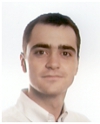 David Dubuc (S'99, M'03) received the Ph.D. degree in electrical engineering from the University of Toulouse, Toulouse, France. He is an Associate Professor with the University of Toulouse, and a Researcher with the Laboratory of Analysis and Architecture of System part of National Scientific Research Center (LAAS-CNRS), Toulouse, France. His research interests include the development of microwave circuits integrated due to microtechnologies and their application to wireless telecommunication and biology.
David Dubuc (S'99, M'03) received the Ph.D. degree in electrical engineering from the University of Toulouse, Toulouse, France. He is an Associate Professor with the University of Toulouse, and a Researcher with the Laboratory of Analysis and Architecture of System part of National Scientific Research Center (LAAS-CNRS), Toulouse, France. His research interests include the development of microwave circuits integrated due to microtechnologies and their application to wireless telecommunication and biology. 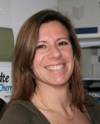 Mary Poupot received her PhD degree in Biochemistry from the University of Paul Sabatier, Toulouse, France. She is a Researcher at the Cancer Research Center of Toulouse. Her research interests are based on the impact of the tumor microenvironment on the survey of cancer cell in particular in hematopoietic diseases.
Mary Poupot received her PhD degree in Biochemistry from the University of Paul Sabatier, Toulouse, France. She is a Researcher at the Cancer Research Center of Toulouse. Her research interests are based on the impact of the tumor microenvironment on the survey of cancer cell in particular in hematopoietic diseases. 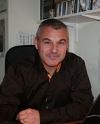 Jean-Jacques Fournié received his Ph.D. degree in microbial biochemistry from the University of Toulouse, Toulouse, France. He is currently heading the Cancer Research Center of Toulouse (CRCT), France. His fields of scientific expertise are biochemistry, pharmacology, immunology and cancer.
Jean-Jacques Fournié received his Ph.D. degree in microbial biochemistry from the University of Toulouse, Toulouse, France. He is currently heading the Cancer Research Center of Toulouse (CRCT), France. His fields of scientific expertise are biochemistry, pharmacology, immunology and cancer. 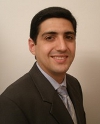 Gustavo Guarin is currently pursuing his PhD in Electric Engineering at the University of Erlangen-Nuremberg. He works at the Institute for Electronic Engineering with Prof. Dr.-Ing. Dr.-Ing. habil. Robert Weigel and with Prof. Dr.-Ing. Georg Fischer. The focus of his research is on Ultra-Wideband Microwave Sensors for spectroscopy applications in biomedicine.
Gustavo Guarin is currently pursuing his PhD in Electric Engineering at the University of Erlangen-Nuremberg. He works at the Institute for Electronic Engineering with Prof. Dr.-Ing. Dr.-Ing. habil. Robert Weigel and with Prof. Dr.-Ing. Georg Fischer. The focus of his research is on Ultra-Wideband Microwave Sensors for spectroscopy applications in biomedicine. 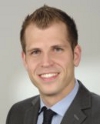 Maximilian Hofmann received the Dipl.-Ing. degree in electrical, electronic and communications engineering from the University of Erlangen-Nuremberg, Nuremberg, Erlangen, Germany. He joined the Institute for Electronics Engineering, Erlangen, Germany, as a Research Assistant.
Maximilian Hofmann received the Dipl.-Ing. degree in electrical, electronic and communications engineering from the University of Erlangen-Nuremberg, Nuremberg, Erlangen, Germany. He joined the Institute for Electronics Engineering, Erlangen, Germany, as a Research Assistant. 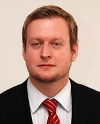 Dietmar Kissinger received the Dr.-Ing. degree in electrical engineering from the University of Erlangen-Nuremberg, Erlangen, Germany. He holds a position as Lecturer and Head of the RF Integrated Sensors Group at the Institute for Electronics Engineering. His research interests include silicon-based microwave and millimeter-wave integrated circuits as well as wireless sensors and communication systems for ultra-low power, automotive, industrial, security, and medical applications.
Dietmar Kissinger received the Dr.-Ing. degree in electrical engineering from the University of Erlangen-Nuremberg, Erlangen, Germany. He holds a position as Lecturer and Head of the RF Integrated Sensors Group at the Institute for Electronics Engineering. His research interests include silicon-based microwave and millimeter-wave integrated circuits as well as wireless sensors and communication systems for ultra-low power, automotive, industrial, security, and medical applications. 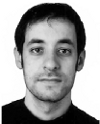 Dr. Cristiano Palego is a senior lecturer in Smart Sensors and Instrumentation at Bangor University, UK and a visiting research scientist at Lehigh University, USA. He received the Ph.D. degree in Microwave Engineering and Optoelectronics from the University of Limoges, France. He is currently a research scientist at Lehigh. His interests include electromagnetic theory, micro/nanotechnology and biomedical research as well as RF-MEMS for reconfigurable frontends, antenna arrays, and high-power applications.
Dr. Cristiano Palego is a senior lecturer in Smart Sensors and Instrumentation at Bangor University, UK and a visiting research scientist at Lehigh University, USA. He received the Ph.D. degree in Microwave Engineering and Optoelectronics from the University of Limoges, France. He is currently a research scientist at Lehigh. His interests include electromagnetic theory, micro/nanotechnology and biomedical research as well as RF-MEMS for reconfigurable frontends, antenna arrays, and high-power applications. 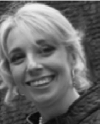 Dr. Caterina Merla received the Ph.D. degrees in electronic engineering from the University of Rome "La Sapienza," Italy. She is currently with the Italian National Agency for New Technologies, Energy and Sustainable Economic Development (ENEA), Research Centre in Rome and a Visiting Research Scientist at Lehigh University, Bethlehem, PA. Her research interests are mainly focused on the microdosimetric evaluation of the electromagnetic (EM) field at single cell level, biological sample dielectric measurements, and design and dosimetry of exposure systems oriented to EM protection studies and medical applications.
Dr. Caterina Merla received the Ph.D. degrees in electronic engineering from the University of Rome "La Sapienza," Italy. She is currently with the Italian National Agency for New Technologies, Energy and Sustainable Economic Development (ENEA), Research Centre in Rome and a Visiting Research Scientist at Lehigh University, Bethlehem, PA. Her research interests are mainly focused on the microdosimetric evaluation of the electromagnetic (EM) field at single cell level, biological sample dielectric measurements, and design and dosimetry of exposure systems oriented to EM protection studies and medical applications.  Yaqing Ning is currently working toward her Ph.D. degree at Lehigh University. She is involved in research on RF MEMS capacitive switches and phase shifters, as well as on biomedical devices for detection purposes. She specializes in 3D electromagnetic simulation using finite element methods.
Yaqing Ning is currently working toward her Ph.D. degree at Lehigh University. She is involved in research on RF MEMS capacitive switches and phase shifters, as well as on biomedical devices for detection purposes. She specializes in 3D electromagnetic simulation using finite element methods. 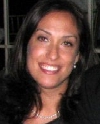 Caroline Multari is currently working towards her Ph.D. at Lehigh University in Materials Science and Engineering, focusing on research in point-of-care microfluidic biosensors and developing polymeric biomaterials for bioparticle capture.
Caroline Multari is currently working towards her Ph.D. at Lehigh University in Materials Science and Engineering, focusing on research in point-of-care microfluidic biosensors and developing polymeric biomaterials for bioparticle capture. 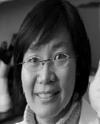 Dr. Xuanhong Cheng is the Rossin Assistant professor of Bioengineering and Materials Science and Engineering at Lehigh University. She received her Ph.D. in bioengineering at University of Washington. She joined Lehigh University, where her current research interest is focused on developing new nanomaterials and microfluidic platforms to analyze intact, live bioparticles, such as cells and pathogens at the point of need.
Dr. Xuanhong Cheng is the Rossin Assistant professor of Bioengineering and Materials Science and Engineering at Lehigh University. She received her Ph.D. in bioengineering at University of Washington. She joined Lehigh University, where her current research interest is focused on developing new nanomaterials and microfluidic platforms to analyze intact, live bioparticles, such as cells and pathogens at the point of need. 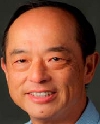 Prof. James C. M. Hwang received the Ph.D. degree in materials science from Cornell University, Ithaca, NY. He joined Lehigh University, Bethlehem, PA as a Professor of electrical engineering and Director of the Compound Semiconductor Technology Laboratory. His current research interests include MEMS, microwave and photonic devices and integrated circuits, and bio-electromagnetics.
Prof. James C. M. Hwang received the Ph.D. degree in materials science from Cornell University, Ithaca, NY. He joined Lehigh University, Bethlehem, PA as a Professor of electrical engineering and Director of the Compound Semiconductor Technology Laboratory. His current research interests include MEMS, microwave and photonic devices and integrated circuits, and bio-electromagnetics. 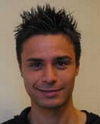 Marco Mercuri is currently working towards the Ph.D degree within the TELEMIC research group of the Department of Electrical Engineering (ESAT), KU Leuven, Belgium. His research interests include biomedical applications of microwave/RF, wireless sensors, and microwave/millimeter-wave measurements.
Marco Mercuri is currently working towards the Ph.D degree within the TELEMIC research group of the Department of Electrical Engineering (ESAT), KU Leuven, Belgium. His research interests include biomedical applications of microwave/RF, wireless sensors, and microwave/millimeter-wave measurements. 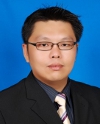 Ping Jack Soh is currently working towards his Ph.D in the ESAT-TELEMIC Research Division, Katholieke Universiteit Leuven, Belgium. His research interests include planar antennas, flexible/textile antennas, on-body communication, metamaterials, passive microwave components and microwave measurements.
Ping Jack Soh is currently working towards his Ph.D in the ESAT-TELEMIC Research Division, Katholieke Universiteit Leuven, Belgium. His research interests include planar antennas, flexible/textile antennas, on-body communication, metamaterials, passive microwave components and microwave measurements. 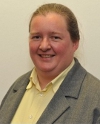 Dominique Schreurs received the Ph.D. degree in electronic engineering from University of Leuven (KU Leuven), Belgium. She is a Full Professor at KU Leuven. Her main research interests concern the (non)linear characterization and modelling of microwave devices and circuits, as well as (non)linear hybrid and integrated circuit design for telecommunications and biomedical applications.
Dominique Schreurs received the Ph.D. degree in electronic engineering from University of Leuven (KU Leuven), Belgium. She is a Full Professor at KU Leuven. Her main research interests concern the (non)linear characterization and modelling of microwave devices and circuits, as well as (non)linear hybrid and integrated circuit design for telecommunications and biomedical applications.